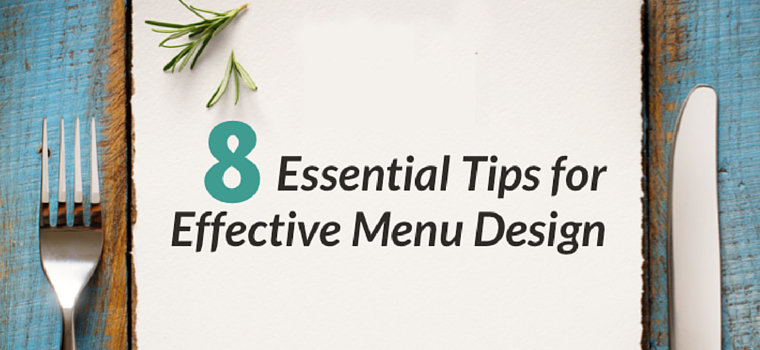Franchising, retail, business

11/06/2015
The restaurant menu is a crucial guest touchpoint. Guests usually interact with the menu even before they meet the server or cashier. A thoughtfully designed menu can make a significant impact on revenue by drawing attention to the most profitable menu items and leaving a lasting impression with the guest.
While it's tempting to focus just on what "looks pretty," menu design is only effective if you’ve already analyzed the cost and profitability of your menu items. Take that data and use it to your advantage when designing your menu. These eight tips will help you make strategic decisions about design, but should only implemented if the design fits your restaurant's individual brand and personality. Click through for these essential restaurant menu design tips and tricks!
1. The Golden Triangle
Menu engineering specialists say that our eyes typically start in the middle of a page, then move to the top right, then top left.
Tip: Consider putting high-margin dishes at the center and upper right corner of your menu.
2. Use White Space
Studies show that use of white space improves reader comprehension by up to 30%. If you want your menu to leave a lasting impression, plan to incorporate some negative space into menu design.
Tip: Leave some negative space to improve aesthetics and to ensure that the guest isn’t overwhelmed.
3. Give Visual Direction
If something’s important – highlight it! The same principle of underlining important words in a sentence also applies to menu design.
Tip: Use boxes, lines, and color to attract attention to your high-margin menu items.
4. Use Price Strategically
A study at Cornell found that diners who ordered from a menu without dollar signs ($) spent significantly more than those who ordered from a traditionally priced menu.
If menu items are more expensive but quality is a focus, use menu design to downplay cost.
Tip: Consider removing dollar signs and don’t list prices in a single column.
5. No Really, Use Price Strategically
Don’t lose site of the fact that your menu is a direct reflection of your restaurant’s pricing strategy and brand.
If low prices and good value are an important part of your brand, use your menu to convey that message.
Tip: Highlight economic value by enlarging prices and strategically packaging menu items.
6. The Burden of Choice
A study at Bournemouth University found that there is a “sweet spot” between too few and too many menu choices.
Customers like to see 6 items per category in fast food shops and and 7-10 items for fine dining restaurants.
Tip: Match the length and options on your menu to match your customers’ expectations.
7. Carefully Select Pictures
Renowned menu engineer Gregg Rapp has found that including a nice-looking picture alongside a food item increases sales by 30 percent.
Tip: Especially on digital menu boards, consider using high-quality photos of high-margin items to entice diners.
8. No Pictures? Use Imagery in Words
Use menu item descriptions to communicate the deliciousness of a dish. Words like “savory,” “buttery,” and “crisp” elicit a visceral reaction. Have fun with it! Use descriptions to convey the restaurant’s personality.
By:http://blog.toasttab.com/8-tips-for-effective-menu-design?_hsenc=p2ANqtz-9P3CSAsxvf1aRi5rLTBR3LUoSKGb1b_fF2S6YkK9RPOfDULNK7sEKbU3L_xeO8fJ2MYq_PCbOfoDXy1fFPQtYuzkYcoQ&_hsmi=23521012&utm_content=buffer0ae1c&utm_medium=social&utm_source=linkedin.com&utm_campaign=buffer